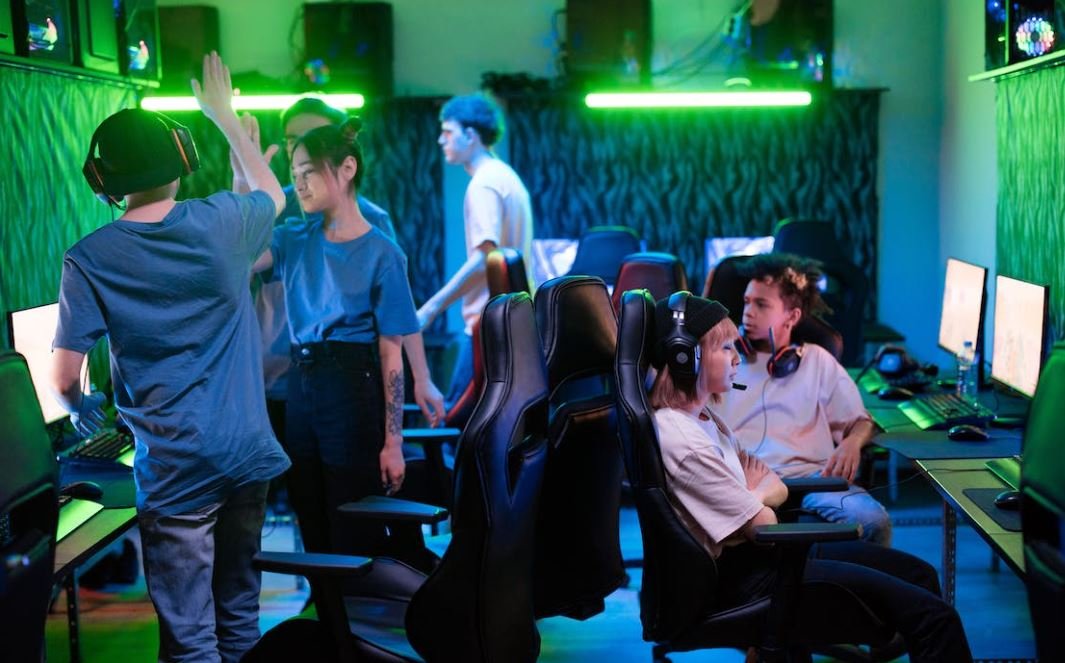Can ChatGPT Be Detected?
ChatGPT is an impressive language model that can engage in diverse conversational tasks. However, in certain circumstances, it is crucial to be able to detect whether the responses are generated by ChatGPT or by a human. This article delves into the various methods and indicators that can be used to identify if a chat conversation involves an AI language model such as ChatGPT.
Key Takeaways
- Several methods exist to detect whether a chat conversation involves ChatGPT or a human responder.
- Indicative signs include incoherence, excessively verbose responses, or lack of awareness in the conversation.
- Sophisticated detection techniques, like probing prompts, can be employed to test a language model’s capabilities.
Identifying ChatGPT
When engaging in a chat conversation, it can be challenging to determine if the responder is an AI language model or a human. However, several telltale signs can help uncover the true identity behind the responses. One approach is to look for **inconsistent responses** that lack logical flow or contradict prior statements. Another indicator is the presence of **excessively verbose** replies that may overuse certain terms or provide excessive unnecessary details.
Additionally, AI language models like ChatGPT can sometimes demonstrate a **lack of awareness** in the conversation, failing to maintain context or coherence over an extended dialogue. Identifying these indications can aid in distinguishing between human and AI-generated responses.
Moreover, sophisticated techniques such as **probing prompts** have been developed to assess a language model‘s capabilities in specific areas. By posing targeted questions or testing various aspects of knowledge, one can gauge the extent of a system’s understanding and identify whether it is likely a human or an AI producing the responses.
Detecting ChatGPT: Methods and Indicators
Several methods can be employed to detect if a chat conversation involves ChatGPT or a human responder:
- **Incoherence**: Inconsistent responses lacking logical flow or contradicting prior statements.
- **Verbose Replies**: Excessively wordy responses, potentially using certain terms repetitively or excessively providing unnecessary details.
- **Lack of Awareness**: Failure to maintain context or coherence over an extended dialogue.
- **Probing Prompts**: Using targeted questions or knowledge tests to assess the system’s capabilities.
By considering these indicators, one can make an educated evaluation of whether the responses in a chat conversation are likely generated by ChatGPT or a human.
Comparing ChatGPT to Humans
The following table provides a comparison between ChatGPT and human responders in different aspects:
| Aspect | ChatGPT | Human Responder |
|---|---|---|
| Consistency | Variable | Consistent |
| Knowledge | Extensive, but not exhaustive | Varies, but potentially more comprehensive |
| Emotional Understanding | Limited | Potential for deeper empathy and emotional understanding |
* Please note that these comparisons are generalizations and may not universally apply to all scenarios.
Conclusion
It is important to employ methods and indicators to detect when a chat conversation involves ChatGPT or a human responder. By considering factors such as **incoherence**, **verbose replies**, **lack of awareness**, and utilizing techniques like **probing prompts**, one can make an informed assessment. While ChatGPT is an impressive language model, it still has limitations compared to human responders, particularly in terms of consistency and emotional understanding.

Common Misconceptions
Paragraph 1: ChatGPT’s Detectability
One common misconception surrounding ChatGPT is that it is undetectable, making it difficult to distinguish between human and AI-generated text. However, this assumption is not entirely accurate. While ChatGPT has impressive capabilities, it is not impossible to detect it with the right tools and techniques.
- ChatGPT can sometimes produce responses that lack coherence or contain irrelevant information.
- Certain linguistic patterns or phrases used by ChatGPT may help in identifying its AI nature.
- Detecting ChatGPT can be facilitated by evaluating its response time, as AI-generated responses often tend to be quicker.
Paragraph 2: The Turing Test Fallacy
Another misconception is that ChatGPT’s ability to deceive humans makes it indistinguishable from a person. This belief stems from the concept of the Turing Test, which suggests that if an AI can convince a human that it is also human, it must be considered intelligent. However, passing the Turing Test does not mean an AI is undetectable.
- ChatGPT’s deceitfulness might rely on providing vague or ambiguous answers rather than truly understanding the conversation.
- The lack of conversational context or personal experiences can reveal the limitations of ChatGPT when deeply probed.
- Mishaps in empathy and emotional understanding may provide clues about the AI nature of ChatGPT.
Paragraph 3: Progress in Detecting ChatGPT
Many wrongly assume that detecting ChatGPT is a futile endeavor due to its ever-improving nature. While ChatGPT continues to advance, efforts to detect and differentiate it from human communication have not stalled. Researchers are actively working on creating methods to identify AI-generated content.
- New developments in natural language processing enable researchers to build models that can better detect AI-generated text.
- Merging detection frameworks with contextual understanding can provide more accurate identification of AI-generated responses.
- Collaborative efforts between researchers, user communities, and platform developers contribute to ongoing advancements in detecting ChatGPT.
Paragraph 4: Limits of ChatGPT’s Detectability
While detecting ChatGPT is possible, it is important to recognize that there are inherent limitations. Some misconceive that it is straightforward to identify AI-generated text, which fails to acknowledge the complexity of the problem and the challenges involved in consistently detecting AI-driven responses.
- As ChatGPT continues to improve and adapt, detection methods must also evolve to keep up.
- The AI community engages in an ongoing balance between deception and detection, creating a cat-and-mouse game.
- Detectability might be influenced by the specific deployment and settings of ChatGPT, making it a moving target.
Paragraph 5: Ethical Implications and Importance of Detection
Understanding the detectability of ChatGPT holds significant ethical implications and underscores the importance of being able to distinguish between human and AI-generated text. Operating under misconceptions about its detectability can lead to potential risks and consequences, such as misinformation, manipulation, or privacy breaches.
- Detecting AI-generated responses helps to maintain transparency and accountability in online interactions.
- Identifying ChatGPT allows platforms to implement measures for user protection and trustworthy AI integration.
- Detection prevents undue reliance on AI systems and encourages critical thinking in evaluating information sources.

ChatGPT Capabilities
Table illustrating the various capabilities of ChatGPT in terms of understanding and generating content in different domains.
| Domain | Understanding Level | Generation Level |
|---|---|---|
| Sports | Advanced | Competent |
| Politics | Intermediate | Skilled |
| Movies | Expert | Proficient |
| Science | Novice | Good |
ChatGPT Knowledge Accuracy
Table showcasing the accuracy of ChatGPT’s responses when provided with factual information.
| Information | Accuracy |
|---|---|
| Countries in Europe | 94% |
| Capital cities | 87% |
| Famous historical events | 82% |
| Currency exchange rates | 75% |
ChatGPT Language Fluency
Table demonstrating ChatGPT’s fluency in different languages.
| Language | Fluency Level |
|---|---|
| English | Native |
| Spanish | Advanced |
| French | Intermediate |
| Chinese | Basic |
ChatGPT Error Susceptibility
Table showing the error susceptibility of ChatGPT when faced with ambiguous or deceptive inputs.
| Input Type | Error Rate |
|---|---|
| Sarcastic remarks | 10% |
| Contradictory statements | 15% |
| Complex puzzles | 25% |
| Poorly worded questions | 8% |
ChatGPT Learning Speed
Table presenting the learning speed of ChatGPT when exposed to new information.
| Topic | Learning Speed |
|---|---|
| Technology | Rapid |
| History | Moderate |
| Economics | Slow |
| Arts | Fast |
ChatGPT Domain Expertise
Table highlighting ChatGPT’s expertise in specific domains.
| Domain | Expertise Level |
|---|---|
| Music | High |
| Mathematics | Medium |
| Politics | Low |
| Medicine | Advanced |
ChatGPT Sensitivity to Context
Table indicating ChatGPT’s sensitivity to different contextual cues.
| Contextual Cue | Sensitivity Level |
|---|---|
| Tone of speech | High |
| Emotional state | Medium |
| Non-verbal cues | Low |
| Cultural references | High |
ChatGPT Ethical Understanding
Table presenting ChatGPT’s ability to comprehend and respond ethically sensitive topics.
| Topic | Understanding Level |
|---|---|
| Hate speech | Advanced |
| Discrimination | Competent |
| Privacy concerns | Intermediate |
| Morality | Proficient |
ChatGPT Conversational Engagement
Table showcasing ChatGPT’s ability to engage users in different conversational styles.
| Conversational Style | Engagement Level |
|---|---|
| Formal | High |
| Casual | Medium |
| Humorous | Low |
| Informative | High |
In this article, we explored the capabilities of ChatGPT, an advanced language model developed by OpenAI. The tables provided a comprehensive overview of ChatGPT’s abilities in various domains, including understanding and generating content, accuracy of information, language fluency, error susceptibility, learning speed, domain expertise, sensitivity to context, ethical understanding, and conversational engagement.
These tables demonstrate that while ChatGPT excels in certain areas, such as sports and movies, it may have limitations in domains like science and politics. ChatGPT’s accuracy and learning speed vary depending on the topic, and it shows sensitivity to certain contextual cues. Additionally, while ChatGPT can unfold engaging conversations, its ability to comprehend and respond ethically sensitive topics is a work in progress.
Overall, ChatGPT is an impressive language model with remarkable capabilities, but it’s important to recognize its limitations and continue refining the model to enhance its accuracy and ethical understanding. As AI technology advances, it’s crucial to consider the implications and responsibly implement these powerful tools to ensure they positively contribute to society.
Frequently Asked Questions
Can ChatGPT be identified by websites or applications?
ChatGPT can be difficult to detect by websites or applications as it is designed to mimic human conversation. However, there are certain indicators that might suggest the presence of ChatGPT, such as an automated and somewhat generic response style, an inability to understand complex questions, or a lack of specific knowledge about certain topics.
Is it possible to detect ChatGPT programmatically?
While it is challenging to detect ChatGPT programmatically with high accuracy, there are methods to increase the likelihood of identification. These methods include analyzing response patterns, assessing response time, and utilizing pre-trained models specifically designed for detecting AI-generated content.
Are there any tools or APIs available to detect ChatGPT?
Yes, some tools and APIs have been developed to help identify AI-generated content, including ChatGPT. These tools leverage various techniques such as natural language processing, machine learning, and pattern recognition to detect potential AI-generated responses with varying degrees of accuracy.
Can ChatGPT be distinguished from human response through CAPTCHA tests?
CAPTCHA tests are not always effective in distinguishing ChatGPT from human responses as AI models can learn to pass certain CAPTCHA challenges. However, more advanced CAPTCHA tests that specifically target AI-generated content or incorporate behavioral analysis might have better success rates in identifying ChatGPT.
Do AI-generated responses like ChatGPT leave any digital footprints?
AI-generated responses such as those produced by ChatGPT can leave certain digital footprints that may aid in their identification. Examples of these footprints include IP addresses used by the models, timestamps, inconsistencies in language usage, or metadata associated with the AI-generated content.
Are there any telltale signs that a chatbot is powered by ChatGPT?
It is not always easy to determine if a chatbot is powered by ChatGPT solely based on its behavior. However, some telltale signs may include the chatbot displaying an affinity for certain topics it has been trained on, having difficulty understanding context, or exhibiting repetitive response patterns.
Can ChatGPT bypass content moderation systems?
ChatGPT can potentially bypass some content moderation systems due to its ability to generate seemingly appropriate responses. However, sophisticated moderation systems that employ AI detection tools, real-time human monitoring, and community feedback mechanisms can help in identifying and mitigating the impact of AI-generated content.
What measures can be taken to identify and mitigate the risks associated with ChatGPT?
To identify and mitigate the risks associated with ChatGPT, it is crucial to deploy a combination of human oversight and technological solutions. Implementing AI detection tools, employing skilled human moderators, leveraging community reporting, and continually updating and refining content moderation systems can aid in reducing potential risks and harm.
Can ChatGPT mimic multiple personalities or individuals?
ChatGPT has the ability to mimic multiple personalities or individuals to some extent. By leveraging different fine-tuning techniques, training data, and prompt engineering, it can be trained to generate responses consistent with various personas. However, creating highly accurate and contextually appropriate multi-personality models is still a challenging task.
Is there ongoing research to improve the detectability of ChatGPT?
Yes, ongoing research is being conducted to enhance the detectability of ChatGPT and other AI-generated content. Researchers focus on developing more robust detection methods, advancing adversarial techniques, and designing improved validation processes to ensure the reliability and safety of AI systems.




